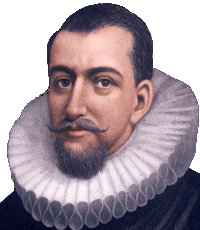“The Columbian exchange” is the name given to the transfer of plants, animals, peoples and microbes which took place between the Americas and the rest of the world after the year 1492. The Columbian exchange had a profound impact on nutrition, population growth, food culture and the prevalence of diseases. For example: today chilies are essential to the food of India and Southeast Asia, yet prior to 1492 they were unknown in these parts of the world. Before Columbus, Indian curries where made with black pepper, not chilies. [Read more: “Chocolate and chilies“] It is equally difficult to imagine that Italian food was made without tomatoes, that there was no coffee in Brazil, no bananas in Central America and no sugarcane in Cuba. Or that the native peoples of North America had no horses.
Species that did not exist outside of the Americas before 1492 include: corn, potatoes, tomatoes, tobacco, cassava, sweet potatoes, turkey, peanut, manioc, chocolate, vanilla, pineapple, avocado, cashew, squash, rubber and strawberry. Species that did not exist in the Americas include: coffee, wheat and barley, sugarcane, banana, rice, horse, donkey, mule, pig, cow, sheep, goat, chicken, large dogs, cat and honey bees.
Diseases were also exchanged, and with devastating effect. Some 80 percent of the native population of the Americas died as a result of measles and smallpox epidemics. In some places, like the island of Hispaniola where Columbus first landed, all of the natives died. In return the Europeans got syphilis. The first known European case of the venereal disease dates from 1493. The first great outbreak occurred in Italy the following year.
The potato had a crucial impact on the level of nutrition in Europe, yet it was slow to be adopted. Often the production had to be officially promoted. In Sweden, the potato only caught on once it was discovered that it could be used to make brännvin, or vodka. In 1748, the person responsible for the discovery, Eva de la Gardie, became the first female member of the Royal Swedish Academy of Sciences. The nutritional content of the potato was one reason for Europe’s rapid population growth between the years 1700 and 1900.
External links:
- Alfred W. Crosby, “The Columbian Exchange: Plants, Animals, and Disease between the Old and New Worlds”
- Alfred W. Crosby, The Columbian exchange: biological and cultural consequences of 1492
- BBC News, “Llama blood clue to beating all flu”
- Elena Esposito, “Side Effects of Immunities: the African Slave Trade”
- History Magazine, “The impact of the potato”
- Irving Rouse, “The Tainos: rise & decline of the people who greeted Columbus”
- Jared Diamond, ” The Story Of… Smallpox – and other Deadly Eurasian Germs”
- Quartz, “Thanks Columbus! The true story of how syphilis spread to Europe”
- Smithsonian.com, ” Alfred W. Crosby on the Columbian Exchange”

